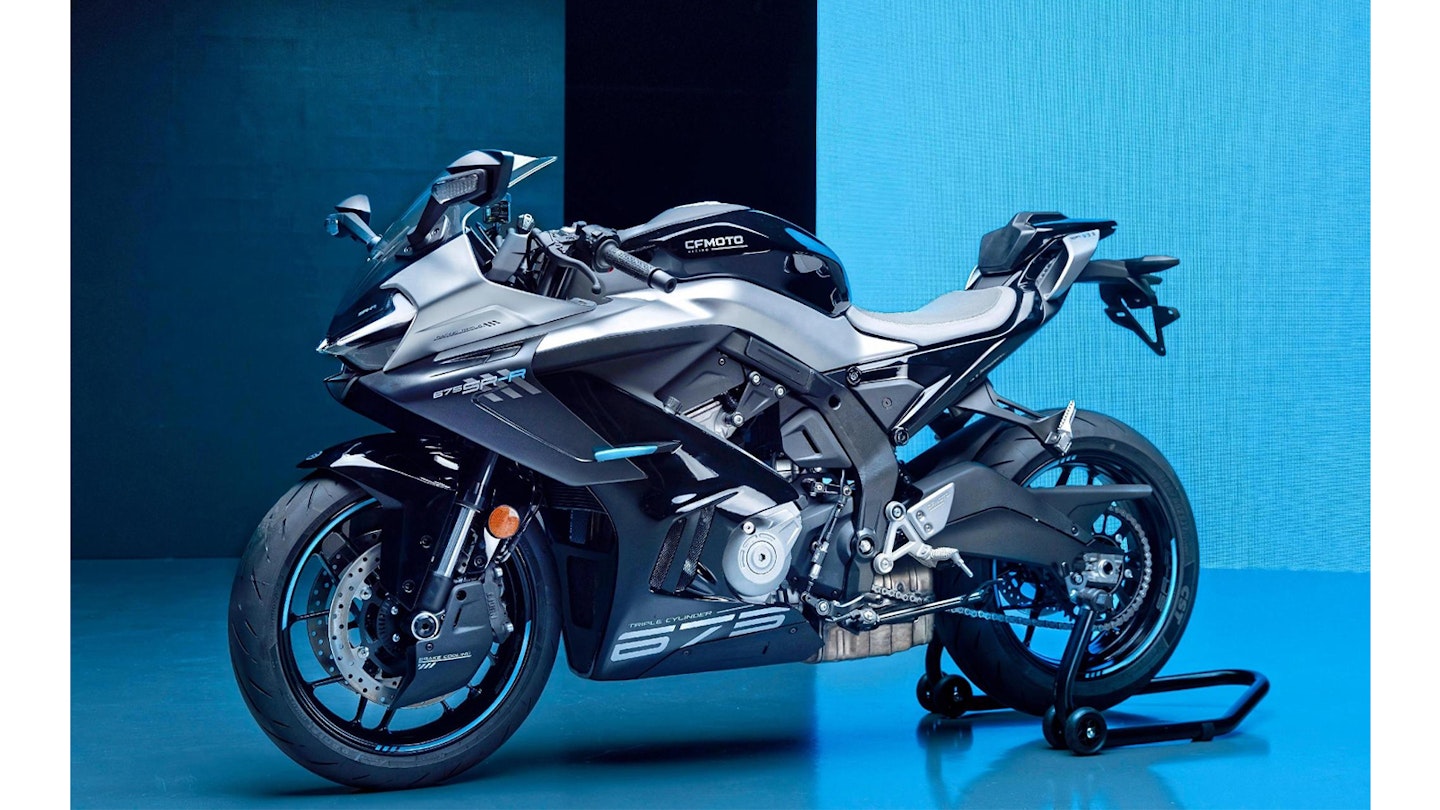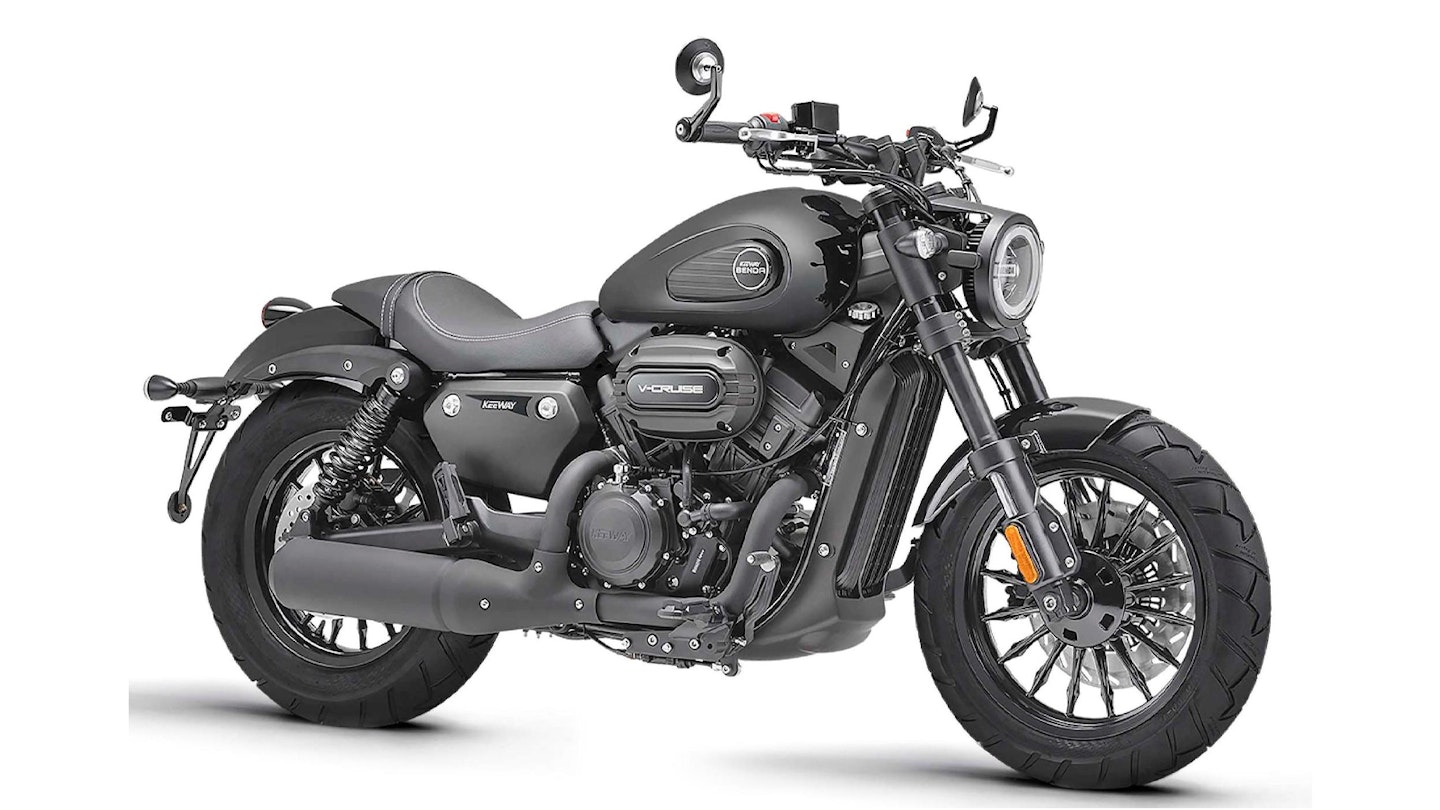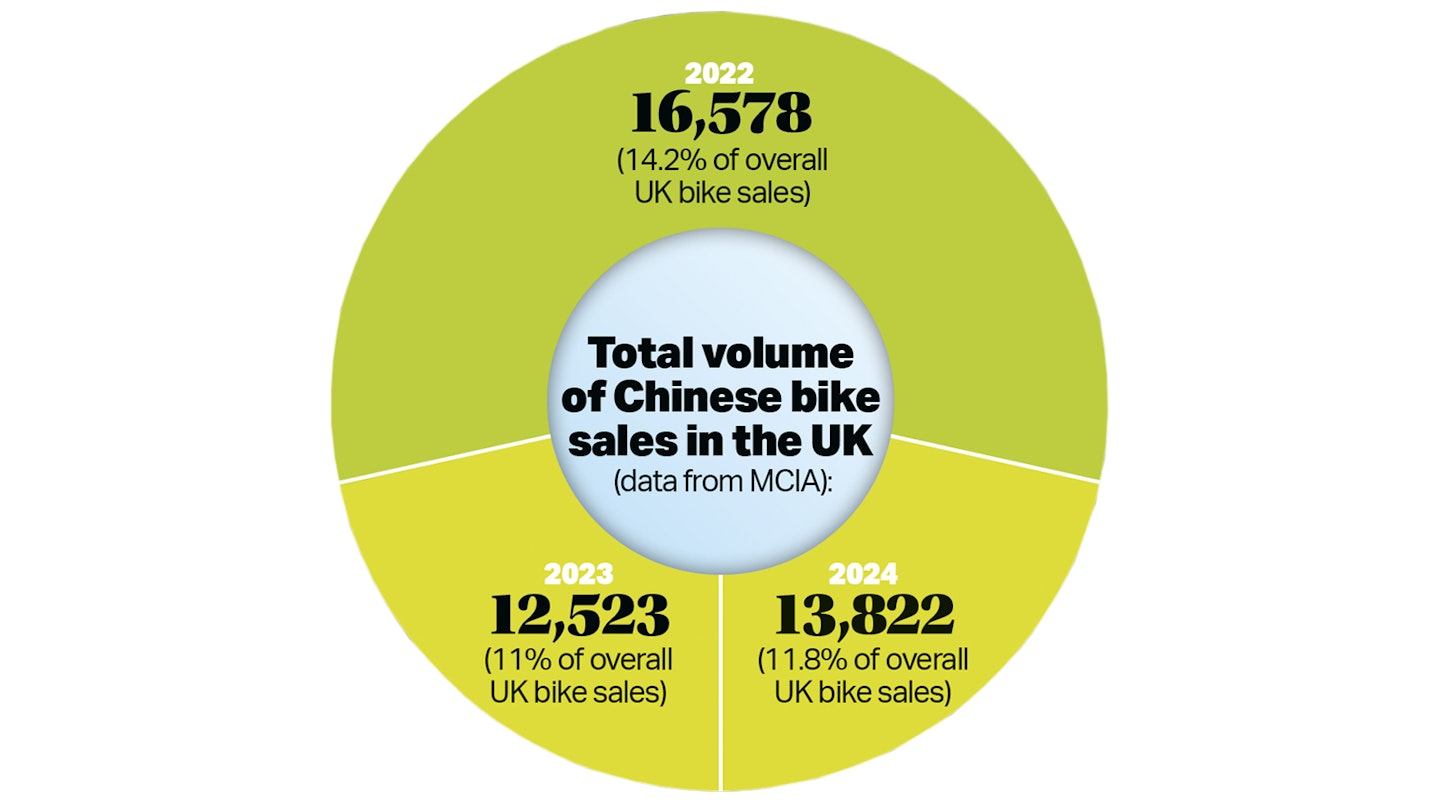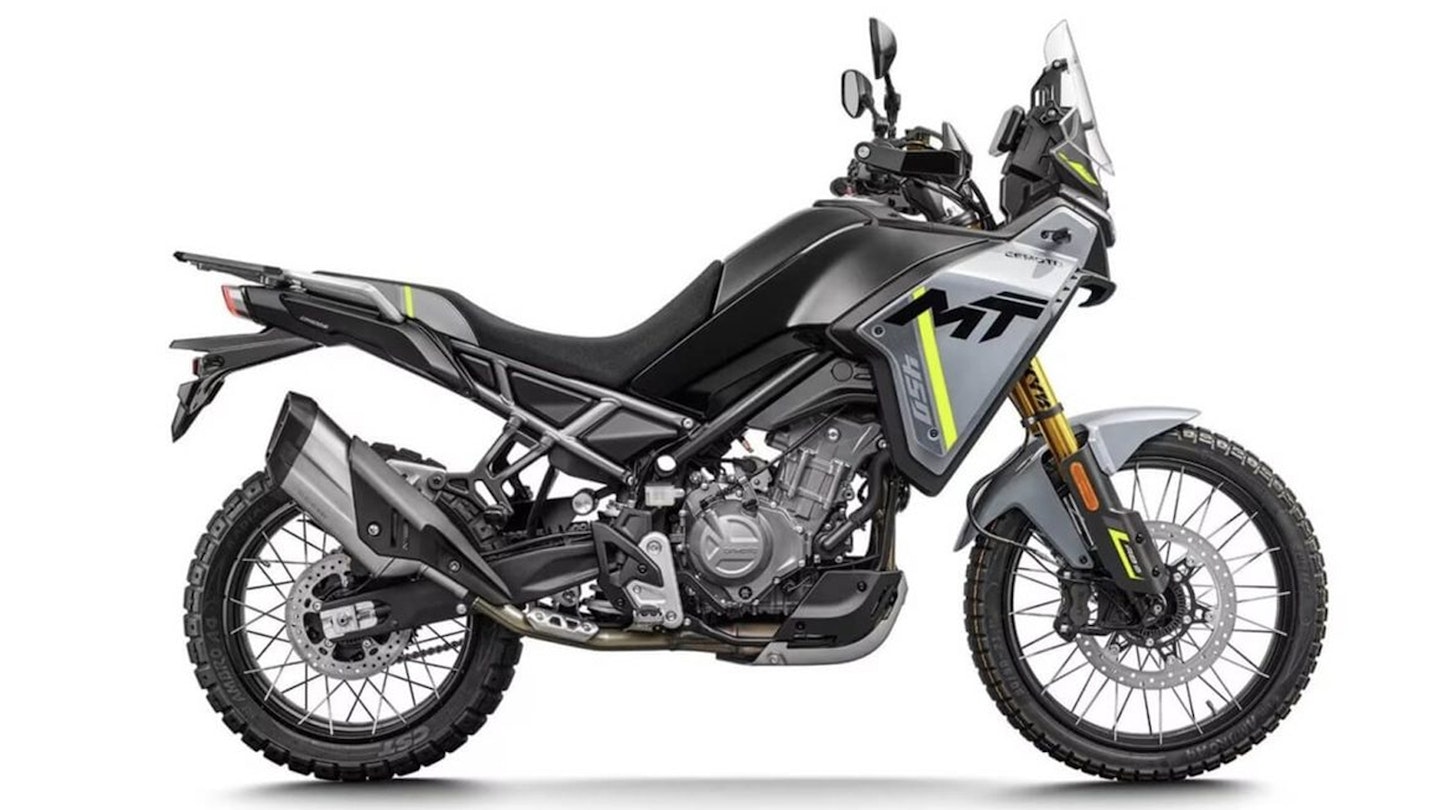CHINESE VALUE
Chinese-made motorcycles have impressive specs for attractive pricing. Chris Cope asks whether they’re great value or if you get what you pay for…
Photography: CFMoto, Lexmoto, Keeway, Kove Moto UK
From AJS to Zontes, there’s almost a made-in-China motorcycle in the UK for every letter of the alphabet. Not surprising. More than 200 individual companies in China produce bikes and bike components. And, according to stats from the China Chamber of Commerce for Motorcycles, those companies produced 19.97 million motorcycles last year, about half of which were exported. Add more than one million exported engines on top of that.
All those Chinese bikes carry a stigma, however, rooted in the bad old days of poorly made knock-offs. US journalist Evan Allen tells a story about a ‘pit bike-type of thing’ his father brought home when he was a kid. ‘It barely ever ran,’ says Evan. ‘And when it did, you couldn’t get more than 20 minutes of riding in without the footpegs falling off.’
His experience isn’t uncommon. But – importantly – it’s also not recent. That story’s from 2008. We still used tax discs back then. The iPhone had only recently been launched. And remember Basshunter? Me neither, but seems he was No.1 in the charts for five weeks running.
Times change. Chinese bikes we see in the UK today are of better quality and desirability than they were when Fabio Capello was manager for England. ‘We’ve reached a point where we include Chinese bikes in tests and don’t need to say “good for a Chinese bike” or have any caveats,’ observes editor Mike Armitage. ‘In fact, we’ve stopped pointing out where they’re made.’
But old stereotypes die hard, and many riders still look at Chinese bikes and ask: are these things cheap for a reason? Sure, they’re way better than they were – but does that really mean you should buy one?

What and by who
In the UK, five of the most attention-grabbing Chinese brands are Lexmoto, Qianjiang, CFMoto, Tayo, and Loncin. You’ve probably only heard of three of these, which speaks to one of the quirks of Chinese brands: they’re traditionally really fond of rebadging, and this can make things confusing.
Lexmoto is the most successful Chinese brand in the UK, outselling its nearest competitor by almost two-to-one. Lexmoto is a British name – a subsidiary of Devon-based Llexeter Ltd – but their small-capacity bikes come from a variety of Chinese manufacturers. ‘We have transitioned over the years from a cheap product company to, now, an established motorcycle brand which is holding its head high,’ says brand and sales manager Rob Woolley. ‘The factories we deal with now are some of the best in China.’
Qianjiang takes bragging rights for producing the UK’s bestselling Chinese model. Its Keeway Superlight 125 has been No.1 for three years running. Qianjiang also wholly owns Benelli and recently resurrected Morbidelli (see p32). The Benelli TRK702/X was the bestselling bike in Italy last year, and their TRK502 held the title from 2020-23. Qianjiang also builds Harley-Davidson’s X300 and X500 for Asian markets. If you are a dyed-in-the-wool Harley guy who didn’t know that, find a safe space and give yourself a moment. Such partnerships are common.
CFMoto’s joint venture with KTM is one of the best-known examples of a ‘traditional’ brand working with a Chinese one. CFMoto’s bikes were sold under the WK Bikes name when they first came to the UK, and the KTM partnership has helped them a lot. But despite attention in Western markets, CFMoto don’t rank among the top 10 of Chinese manufacturers in terms of output. Tayo does. It operates around the world with names you probably haven’t heard of, including Haojiang and Kiden, and in the UK their Zontes brand is consistently among the most popular Chinese marques. For a reason: in our February 2025 issue test with the Triumph Speed 400 and Royal Enfield Guerilla 450, we found Zontes’ awkwardly named but very pleasing ZT350-GK Sports Café was ‘astonishing value for money’.
Loncin, maker of Voge, is another of China’s top 10 manufacturers. Like CFMoto, its reputation in the West is stronger thanks to partnering with BMW – they’ve built engines and components for the Bavarian icon for about 20 years. Today it produces all of BMW’s C400 scooters and the engines for the F-series motorcycles: F900R, F900GS, F900XR, etc. And their Voge DS900X – driven by the same 895cc parallel twin used in the F900GS – is getting much interest from UK riders.

Who’s buying them?
In the context of China’s production, the UK’s piece of the pie is teeny. In 2024 we bought 13,822 Chinese bikes, according to Motorcycle Industry Association (MCIA) data. This is almost 12 per cent of overall two-wheeler sales, but the majority were 50cc and 125cc machines. So, most buyers are probably the same as those buying non-Chinese learner-legal bikes: young people, delivery riders, Londoners who renew their CBT every two years.
Further up the capacity ladder, CFMoto, Benelli, Voge and Zontes are major players in the 126cc-500cc class – a segment that increased more than 26 per cent last year. ‘The [CFMoto] 450MT is a fantastic success,’ says Stephen Dibbs, director at Poole Moto. ‘We’ve probably got about 10 people who have placed orders, and we get two or three phone calls a day with people wanting to order them.’ As if to emphasise the point, one of these calls comes in while we’re speaking.
‘The Voge 300 is also very impressive,’ adds sales executive Jamie Nicholls. ‘It’s even got the right tyres for light [off-road] stuff. It’s ready to go.’
They say the typical buyer is over 40 years old – often closer to 60 – and by extension, more experienced. They are a little more confident in their ability to assess quality, more comfortable servicing their own bikes, a little more willing to take a chance on the unknown.
This is supported by Stephen Cope at TK Cope in Colchester, previously a Yamaha dealer but who’s bestsellers are now the Voge Rally 300 and DS900X, and the Benelli TRK502 – all of which are out of stock due to demand. ‘All we can do is sell what we can get, and that is what’s happening… as they’re coming in they’re trickling out. We have people who’ve been riding 30+ years and, particularly with Voge and Benelli, say these are up to the standard they’re used to. We’ve still got people sitting on the fence who say “I’d rather see them out on the roads for another six months before I think of buying”. But we’ve had customers who we sold Japanese bikes to for years, and no one’s come in and said “I won’t be seen buying one of those”.’

Poole Moto have struggled to keep the TRK702 in stock until this year, when it’s been overshadowed by the DS900X. ‘The 900 has been a fantastic success,’ says Stephen Dibbs. ‘The level of spec has really raised the profile of Chinese bikes.’ Perhaps unsurprisingly for a bike with a BMW engine, many of those interested are riders stepping down from the weight of their big GS. Many in that same group clamour for a 450MT.
But it’s not all adventure bikes. ‘Another one we’re getting loads of interest in is Benda,’ says Jamie. ‘Loads of people are excited about them as they look mad.’
Buyers aren’t only thinking with the left side of their brain: utility and affordability. Look at the Benda Moto LFC700 or Napoleonbob 500, and you’ll see what Jamie’s talking about. You’d stand out at your local meet on one of these.

So… are they any good?
This is always tricky because it overlooks so many variables. The quality of a bike is affected by an owner’s riding style and their attitude towards things like servicing, cleaning, storage, and upkeep. Not to mention usage. Expand that nebulous question to encompass the entire output of a country and it becomes quite difficult to answer. But anecdotal evidence suggests that, yes, they’re pretty good.
One reason the 450MT is in high demand is that it’s been receiving glowing reviews, praising performance and ruggedness. In our March 2025 issue, for example, John Westlake chucked one down a hill amid the Edinburgh Trial. Actually, he sent the bike (and himself) groundward several times. It eventually became too much for John, but not the CFMoto. ‘Bloody thing’s indestructible,’ he wrote. Similarly positive response from bike press and YouTubers is fuelling interest in Voge – ‘I’ve never seen a bad review of the 900,’ Stephen Dibbs says – and new-to-the-scene Kove (founded 2017, only arrived in the UK last year) have been winning praise here and in the US. Our test in the October 2024 issue declared the 800X Pro is ‘every bit as good as, if not even better than, the Yamaha [Ténéré 700]’.
In terms of warranty claims, the team at Poole Moto says issues have been insignificant and rare. ‘I’ve had no claims for Voge bikes,’ Stephen Dibbs says. ‘Our biggest issue has been supply.’ (They’re another dealer selling out faster than it can get it.) He also notes he hasn’t had issues getting parts for bikes, and Stephen Cope says similar:
‘Almost [as reliable as] the service we were getting from Yamaha. We happily sell the bikes and we’re happy to provide good backup for them.’
Buy a CFMoto, you get a four-year warranty as standard. Outside the UK, Qianjiang also operates the QJMotor brand; its bikes are sold worldwide, including European countries such as Germany, France and Spain – and in the latter offers sixyear warranties on some models. Impressive? Yes.
Back in the UK, a dig through recall data from the Driver and Vehicle Standards Agency turns up no red flags. You’ll find more recalls from traditional brands than Chinese ones, though of course they also have larger sales volumes and market longevity. This is not to say that Chinese bikes are completely without issue. Grab a magnifying glass and you’ll see overall refinement still isn’t quite there when compared to traditional brands. Switchgear may feel a little flimsy, or overall design may seem uninspired.
And this speaks to something observed over and over researching this article: many Chinese bikes lack that intangible something that makes you need one. With a Triumph or Moto Guzzi, you feel the people who designed them spent a lot of off-the-clock time thinking about them. You imagine they go for a weekend ride and take in what stirs their soul about the look, feel and sound, then show up for work on Monday and translate that into the bike they’re building. Chinese bikes feel like they’re made by people who don’t get weekends off.

Most read Chinese model reviews
-
CFMoto 450MT
-
Voge 525DSX
-
Voge 300 Rally
-
Kove 800X Pro
What the future holds
You’ll hear comparisons between Chinese bikes and the history of Japanese manufacturers. Journalist Justin Dawes recently said: ‘In the 1950s and ’60s Japan was making cheap, inexpensive bikes – some were copies of other things – but they also had their own clean-sheet designs.’ Until very recently, Chinese brands were more committed to imitation than innovation; they often still are. But as their industry matures – and importantly, as it becomes more interested in offering higher-end bikes to Western markets – we’re seeing new ideas.
CFMoto have exciting things in the works, like the 208bhp V4 engine it unveiled at EICMA last year. Kove is winning the affection of better-than-you off-road riders, and Benelli fans eagerly await the arrival of the TRK902 Xplorer. ‘Lexmoto’s future looks good,’ says Rob Woolley. ‘We have survived when others have had to close doors. The likes of WK, Mutt and Sinnis have all gone, which goes to show this market isn’t easy.’
The huge number of brands means others will inevitably fall by the wayside, but it seems the bad old days are gone. Chinese bikes are no longer the gamble they once were. Online-sourced 125s were ridiculously cheap 10 or 15 years ago because of both economics and shockingly low quality. Today they’re cheap not because of component or build quality, but just because of the economic reality in which they exist. Chinese manufacturers have low labour costs and a concentrated supply chain. Depending on the economic thinker you speak to, there may also be some element of coordinated effort to undercut competition.
Yes, they’re cheap for a reason – but that reason is no longer iffy quality. We need to stop calling them ‘cheap’ as this implies flimsiness; what they are is ‘affordable’. And the bikes we’re seeing in 2025 genuinely represent incredible value. Consider the DS900X. It has a BMW engine, KYB suspension, Brembo brakes, Pirelli tyres, cornering ABS, traction control, quickshifter, modes, keyless start, heated grips and seat, cruise control, dash camera, warning radar, tyre monitoring, power outlets and connectivity, all as standard – for £8499. Spec-up a BMW F900GS to match and it nudges £14,000.
Traditionalists may argue a lot of things are left out of that comparison. Dealer support, history, prestige, community, and other intangibles. But the bike that’s in your garage is easier to ride than the one that’s in your daydreams. Motorcycling needs motorcyclists, and if Chinese bikes are putting more butts on more seats – and providing a rewarding experiences and ownership satisfaction – they deserve respect.
Happy customers
Bob McGeady, Shetland, Benelli TRK702
» ‘I bought it from Tom Adamson Motorcycles in Elgin. I ran it in around the north of Scotland in two and a half days. On the second day, I ended up riding in a blizzard.
‘I chose it based on looks and the historical association with the Benelli name, despite its Chinese ownership.
‘I like that it’s light to move around, the clutch is very light, and the engine is responsive in the midrange. Back-lit switches and an easy-toread dash are refinements not always present on more mainstream models [of similar price]. The original screen is superb at keeping wind off your helmet, even at three-figure speeds, but there is a lot of wind on the shoulders. The seat isn’t great, but I always use an Airhawk.
‘I have not had any issues apart from rough fuelling around 2500-3000rpm, but that is not unknown. The TRK attracts discussion – and I’ve not had any negative comments. I’ll probably keep it for a long time.’
Manny Villalba, Bere Regis, Voge DS900X (x2)
» ‘Our previous bikes were two Aprilia Tuareg 660s [Manny and his partner have a bike each]. We had them a couple of years. We did two Spain trips and were quite uncomfortable. So, we were thinking maybe it’s time to get something a bit more substantial.
‘There were all the usual suspects – Africa Twin, Tiger, GS – but when you look at luggage options, crash bars and everything else, it starts to get serious money. I knew about the Voge [it was already released in Spain] and had been watching reviews. We both had a test and liked it. And when you weigh up what you get for the money, it was a worthwhile investment.
‘We’ve not had issues. There was a software update, which sorted the throttle hesitation. Everything else works perfectly: heated grips, heated seat, radar, tyre monitoring – and the lights are as good as any car I’ve had. It’s a pleasure at night. I’m well impressed with that – and the quality of the dashcam.
‘I don’t foresee reliability problems. Fit and finish is good. I’m not one for washing my bike – I ride year-round and don’t stash it away. On the pannier rails, around the welds, there’s a little bit of surface rust, but it’s common on any bike – the Aprilias had Givi racks and had pretty much the same after a year.
‘The bikes get a lot of interest – people know about them, and they know it’s got the BMW engine. This is the future.’
